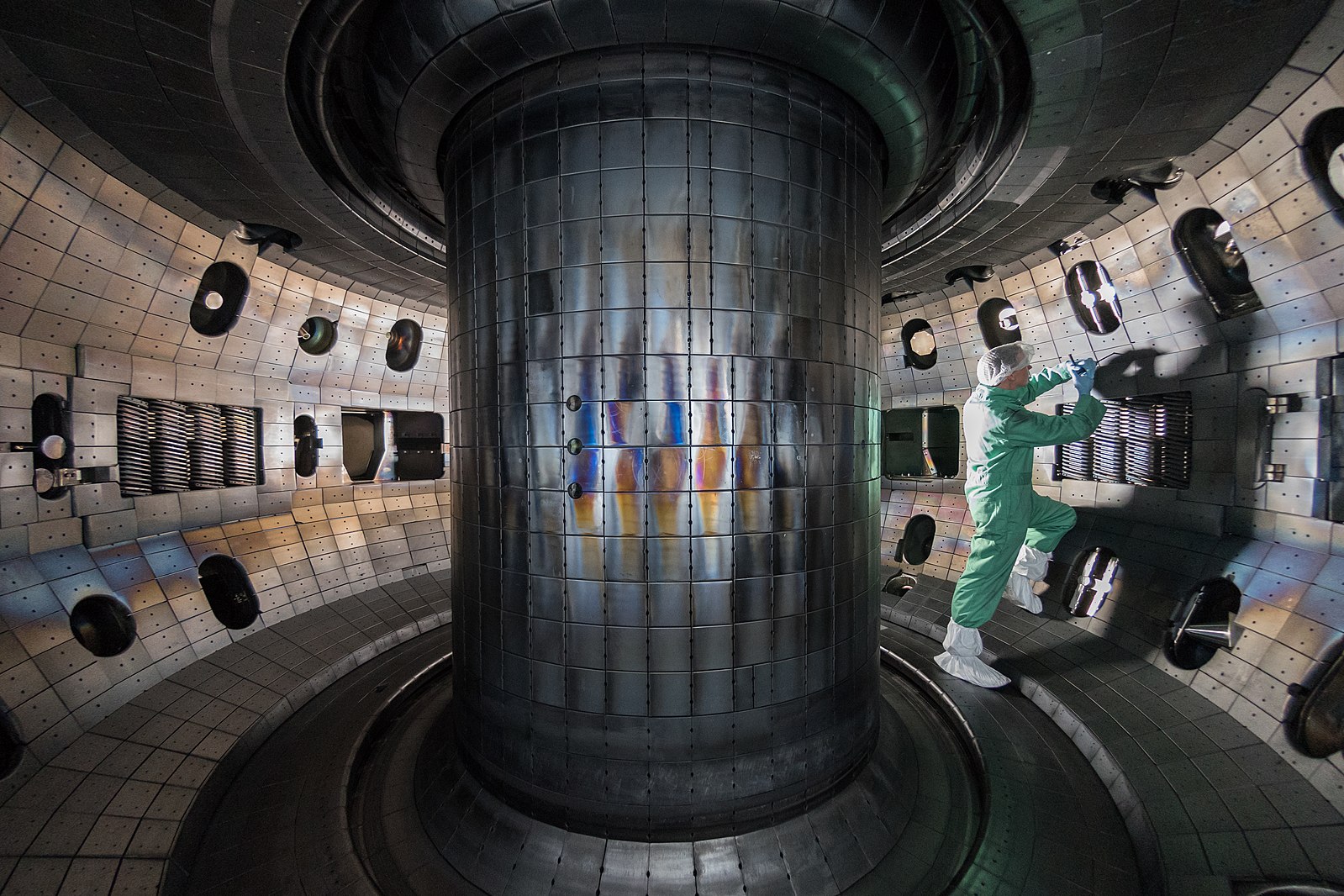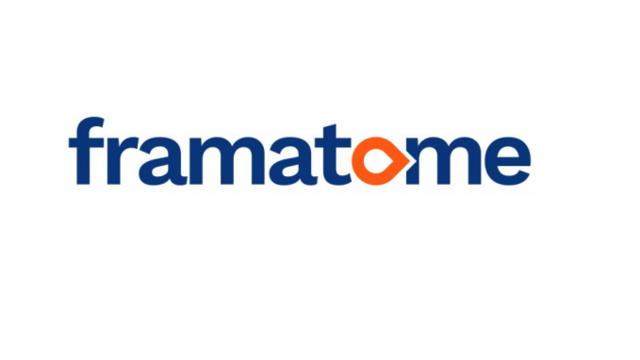Nuclear plants — and inspectors — continue to work through shutdown. Energynews.us
Blog
-

Geiger Readings for Jan 18, 2019
Ambient office = 46 nanosieverts per hour
Ambient outside = 100 nanosieverts per hour
Soil exposed to rain water = 100 nanosieverts per hour
Avocado from Central Market = 70 nanosieverts per hour
Tap water = 115 nanosieverts per hour
Filter water = 104 nanosieverts per hour
-

Nuclear Fusion 54 – Researchers At The U.S. Department Of Energy Princeton Plasma Physics Laboratory Discover New Destabalizing Processes In Tokamaks
I recently blogged about cutting edge research into stabilizing fusion plasmas being carried out the U.S. Department of Energy Princeton Plasma Physics Laboratory. It turns out that another project at the PPPL is making news.
One of the main current approaches to generating fusion power is the tokamak design. This is a donut shaped chamber surround by powerful magnets. A plasma is subjected to enormous heat and pressure in the tokamak to cause fusion in the plasma. One of the big problems with tokamaks is instabilities in the plasma that may cause it to contact the sides of the chamber and quench any fusion reaction.
There are sudden bursts of heat that can occur in tokamaks that can damage the walls of the confinement chamber. These bursts of heat are called “edge localized modes.” Recently researchers at the PPPL have observed a “possible and previously unknown process” that can trigger ELMs.
An experimental physicist named Ahmed Diallo and a theoretical physicist named Julien Dominski who work at the PPPL have teamed up to analyze data from the DIII-D tokamak at the National Fusion Facility run by General Atomics for the DoE in San Diego. They have found a trigger for a particular type of ELM that does not fit into current models of the ways in which ELMs can destabilize tokamak plasmas.
The findings of this research team could illuminate a variety of mechanisms that can cause ELMs. This, in turn, could lead to new tools for suppressing ELMs. Understanding the physics of ELMs is critical to the development of commercial nuclear fusion reactors which could provide abundant, cheap power.
The research team at PPPL made their discoveries when they were studying puzzling data returned by probes that detect the fluctuation of magnetic fields and plasma density during DIII-D tokamak experiments. It turned out that ELMs appeared during periods when the plasma was unusually quiet. Diallo said that “These were special cases that didn’t follow the standard models.” Dominski said, “It was a most interesting collaboration.
During six months of research, the two physicists at the PPPL discovered correlations of fluctuations in the DIII-D that had not been seen before. These correlations showed the formation of two modes or waves at the edge the plasma coupled together to create a third mode. This new mode moved towards the wall of tokamak which resulted in bursts of low-frequency ELMs.
This type of ELM has also been seen in the Joint European Torus (JET) in the United Kingdom. It has also been seen in the ASDEX Upgrade in Germany and other tokomaks following quiet periods. It is possible that these results could also be applied to systems such as solar flares and geomagnetic storms.
The research team at PPPL have discovered and reported on a method for triggering ELMs but they did not completely explain the process they discovered. They need to analyze more data from tokamaks. Diallo said, “If we can fully understand how the triggering works, we can block and reverse it.” -

Geiger Readings for Jan 17, 2019
Ambient office = 80 nanosieverts per hour
Ambient outside = 126 nanosieverts per hour
Soil exposed to rain water = 126 nanosieverts per hour
Butternut Squash from Central Market = 87 nanosieverts per hour
Tap water = 82 nanosieverts per hour
Filter water = 76 nanosieverts per hour
-

Nuclear Reactors 651 – Framatome Is Developing Chromium-Clad Enhanced Accident Fault Tolerant Nuclear Fuel Under U.S. DoE grant
Framatome is a French company that manufactures nuclear reactors and nuclear reactor fuel. It was created in 2018 when Areva, another French company, went bankrupt. Seventy five percent is owned by EDF, the French utility company. Twenty percent is owned by Mitsubishi Heavy Industry, a Japanese company, and five percent is owned by Assystem, an international engineering services firm.
Framatome has just received a forty-nine million dollar grant from the U.S. Department of Energy (DoE) for a twenty eight month project. The purpose of the grant is to accelerate the development and commercial production of enhanced accident tolerant fuel (EATF) for nuclear power reactors. The new grant will allow Framatome to continue work that was begun with a ten-million dollar grant from DoE in 2016. EATFs are being created to improve normal performance in nuclear reactors and to give nuclear plant operators more time to deal with the loss of active cooling in reactors.
Framatome is working on EATF for all types of nuclear power reactors. In the near term, Framatome is experimenting with the use of chromium in nuclear fuel assemblies. Chromium can be used to coat fuel pellets in fuel rods or to clad the entire fuel rod. These new fuel designs should improve fuel efficiency and give operators more flexibility.
Adding chromium to the existing cladding alloys use in nuclear fuel assemblies provides a number of advantages over existing nuclear fuels such as improved resistance to oxidation at high temperatures, the reduction of hydrogen gas generation caused by accidents and increased resistance to wear and debris production in normal operation.
Framatome has been developing chromium cladding for nuclear fuel for several years as part of the DoE’s EATF program. It was announced in July of 2017 that chromium clad fuel pellets and fuel rods would be loaded into the Unit 2 reactor at the Vogtle nuclear power plant in Georgia for testing early in 2018.
In the long term, Framatome will develop the use of silicon-carbide based cladding for nuclear fuel assemblies. It is hoped that silicon-carbide cladding will offer even more improvements than chromium cladding.
Bob Freeman is the vice president of Contracts and Services for Framatome Fuel Commercial and Customer Center in North America. He said, “EATF designs represent the next evolution in technologies that will support today’s and tomorrow’s nuclear reactors and unlock value in Framatome’s
products and the existing nuclear fleet. With the support of DOE, Congress and our industry partners, we are ahead of schedule in making this fuel technology available to nuclear power plants so that they can continue to provide clean, efficient electricity.”
Framatome is one of three companies working with DoE to commercialize EATF. The other two companies are Global Nuclear Fuel (GNF) and Westinghouse. The DoE accident tolerant fuels project was launched in response to the Fukushima nuclear disaster in 2011. The DoE intends to test EATFs in a commercial power reactor by 2022. The DoE is following an accelerated timetable in order to have EATFs available by 2025 for use in the current fleet of commercial nuclear power reactors, many of which are licensed to operate into the 2030s. -

Geiger Readings for Jan 16, 2019
Ambient office = 134 nanosieverts per hour
Ambient outside = 156 nanosieverts per hour
Soil exposed to rain water = 152 nanosieverts per hour
Cauliflower from Central Market = 158 nanosieverts per hour
Tap water = 120 nanosieverts per hour
Filter water = 105 nanosieverts per hour
-

Nuclear Reactors 650 – The Consortium for Advanced Simulation of Light Water Reactors Is Developing The Virtual Environment for Reactor Applications
Most of the nuclear power reactors in the U.S. were built in the 1970s and 1980s. They were licensed for forty years and many have reached that age or will reach it soon. Some operators have applied for permits to operate their reactors for an additional twenty years and most of these applications have been granted. Materials used to build nuclear reactors age and deteriorate over time. The big question that needs to be answered is whether or not it is safe to continue operating reactors well past their original licensed lifespan.
The Consortium for Advanced Simulation of Light Water Reactors (or CASL, for short) was created during the Obama administration to help extend the life of nuclear power reactors. It is funded by the U.S. Department of Energy (DoE). CASL has been working on the creation and refinement of a reactor modeling program they call Virtual Environment for Reactor Applications (VERA).
VERA provides a high-resolution computer model of nuclear reactor equipment. It can simulate safety concerns, reactor startups, and fuel-rod behavior, and other processes, equipment and materials. David Kropaczek is the director of CASL. He says that it might be possible to extends commercial power reactor operations to one hundred years but only if we understand how extended lifespans would affect the materials in the reactor. VERA appears to be able to accurately show how reactor materials age.
It is hoped that VERA will enable nuclear power plant operators to do away with some of the extreme conservatism which was applied in the construction of old nuclear power reactors. By using VERA, plant operators should be able to identify which reactor components need to be replaced in order to keep the reactor in operation safely.
The development of VERA was supported by real-world data from private companies including Westinghouse which designs reactors and distributes nuclear fuel, the Tennessee Valley Authority and the Electric Power Research Institute.
Another application for VERA will be to model the affect of grid demand changes on nuclear reactors. When the full output of a reactor is not needed, some reactors can have their output turned down which is called load-following. This stresses the nuclear fuel and there is a question of exactly how much this stress can damage the fuel. As long as the stress can be minimized, more load-following could be available.
Kropaczek says “Nuclear power plants need to be boring with respect to operations, with respect to the fuel. I don’t want to see any surprises—that’s the goal of a plant: nothing happens. Load-following is no longer steady state and boring. We need to go from 100 percent to 50 percent power and back again. So you’re worried about the fuel and stresses on the fuel and things are changing. VERA can actually… model fuel behavior for load-follow, [reporting] what the fueling is going to do and what is the fuel operating level?… We can look at every fuel rod, every fuel pellet in the core; we can look at those stresses in the fuel.”
CASL is working on making VERA available to many U.S. utilities. They are installing VERA on a one thousand core computing cluster at the Idaho National Laboratory this month. They will be training twenty-four people from twelve different nuclear power companies.
The use of VERA should allow existing nuclear reactors to be operated safely for longer periods of time that their original licenses permit. Hopefully, this will allow extra time for the development of advanced nuclear reactors and economical renewable energy installations.
